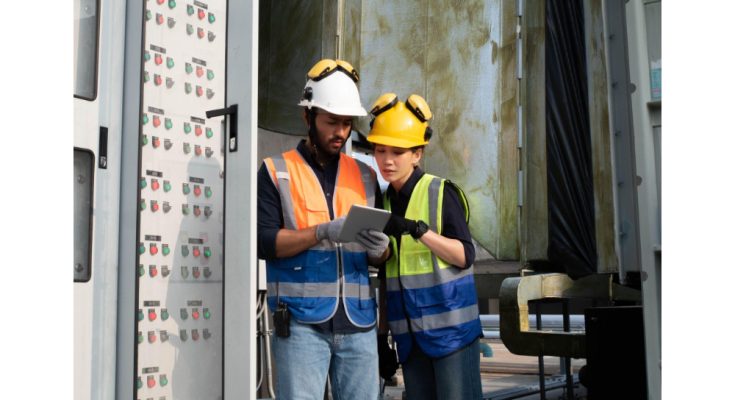In construction, every second counts. A slight delay in lifting operations can lead to costly downtime, safety risks, and logistical setbacks. But what if your crew could move faster, safer, and smarter while maintaining compliance with Singapore’s strict workplace safety standards? Beyond certifications and checklists, a rigger and signalman course is a training that sharpens coordination, communication, and efficiency.
Why Riggers and Signalmen Matter
A rigger is responsible for preparing and securing loads for lifting, ensuring that slings, hooks, and lifting gear are attached. Meanwhile, a signalman acts as the crane operator’s “eyes and ears”, guiding lifts using standardised hand signals or communication devices.
When these two roles are well-coordinated, lifting operations become smoother, safer, and faster. A good team can complete complex lifts in minutes instead of hours. That efficiency begins with proper training in a certified rigger and signalman course.
How Efficiency and Safety Go Hand-in-Hand
In construction, efficiency and safety are inseparable. The rigger and signalman course teaches participants how to save time by eliminating guesswork. When a rigger knows how to select the right sling or angle, and when a signalman communicates clearly, there’s no confusion, no rework, and no wasted effort.
Instead of rushing to meet deadlines, trained teams streamline operations by working with precision. Each motion, signal, and lift becomes part of a synchronised routine, maximising productivity without compromising safety.
Mastering Communication Signals
A misunderstood hand signal or a delayed radio response can stall operations and increase the risk of accidents. Through a rigger and signalman course, participants learn the standardised set of signals recognised under Singapore’s Workplace Safety and Health (WSH) guidelines.
When signals are standardised and practised regularly, teams don’t have to stop mid-operation to clarify commands. This saves minutes per lift, which adds up to hours over the course of a week.
Pre-Lift Planning and Load Assessment
Riggers are trained to assess load weights, balance points, and sling angles before a lift even begins. A well-planned lift means fewer surprises.
During the rigger and signalman course, trainees are taught to prepare a lifting plan, detailing everything from load distribution to environmental factors. By visualising the entire process in advance, they prevent on-site delays caused by last-minute adjustments or unsafe conditions.
Equipment Familiarity and Quick Inspections
Unfamiliarity with lifting gear is another major cause of downtime. Riggers trained under the rigger and signalman course learn to identify equipment types, load capacities, and wear indicators quickly. Routine pre-use inspections are emphasised during training.
Trainees are taught how to spot issues at a glance, ensuring that operations proceed smoothly and safely. This efficiency is about having the confidence to know when equipment is safe and ready for use without unnecessary hesitation.
Real-Time Decision-Making
When working at height or moving heavy materials, decisions must be made in seconds. Participants practice real-world scenarios under supervision, learning how to react quickly to unexpected challenges such as wind changes, shifting loads, or equipment malfunctions.
These drills train them to make sound judgments instantly, preventing dangerous delays or stoppages. It’s about muscle memory and building situational awareness. Experienced riggers and signalmen can spot problems before they escalate, keeping projects on schedule and within safety margins.
Seamless Team Coordination
The bond between a rigger and a signalman is built on trust and understanding. Both roles are interdependent and cannot perform effectively without the other. The rigger and signalman course focuses on teamwork as much as technical skills.
Trainees learn how to anticipate each other’s actions, communicate under pressure, and adapt to dynamic site conditions. When everyone knows their role and responsibilities, coordination becomes automatic, and time spent clarifying or correcting mistakes drops significantly. This synergy transforms a group of individuals into a well-oiled lifting unit, cutting downtime across every operation.
How Training Pays Off in the Long Run
The rigger and signalman course also delivers long-term value by reducing accidents, equipment damage, and costly downtime. In Singapore, certification under the Workplace Safety and Health (WSH) framework is mandatory for those involved in lifting operations. Accredited training providers ensure that participants meet national standards and receive the Statement of Attainment (SOA) upon passing their assessments.
For employers, hiring certified personnel means fewer site incidents, smoother workflows, and lower insurance risks. For workers, it means greater career mobility, professional credibility, and higher earning potential. Efficiency translates directly into opportunity.
Every Minute Counts on the Worksite
The construction industry never slows down, and neither should your team’s safety and efficiency. The rigger and signalman course is a toolkit for mastering the time-saving tricks that define modern lifting operations. From pre-lift preparation to fast communication, every lesson in the rigger and signalman course is designed to help workers make smart decisions under pressure, saving time, money, and lives.
Ready to raise your team’s efficiency? Enrol at Avanta Academy today and discover how mastering communication, coordination, and confidence can transform your workday.



